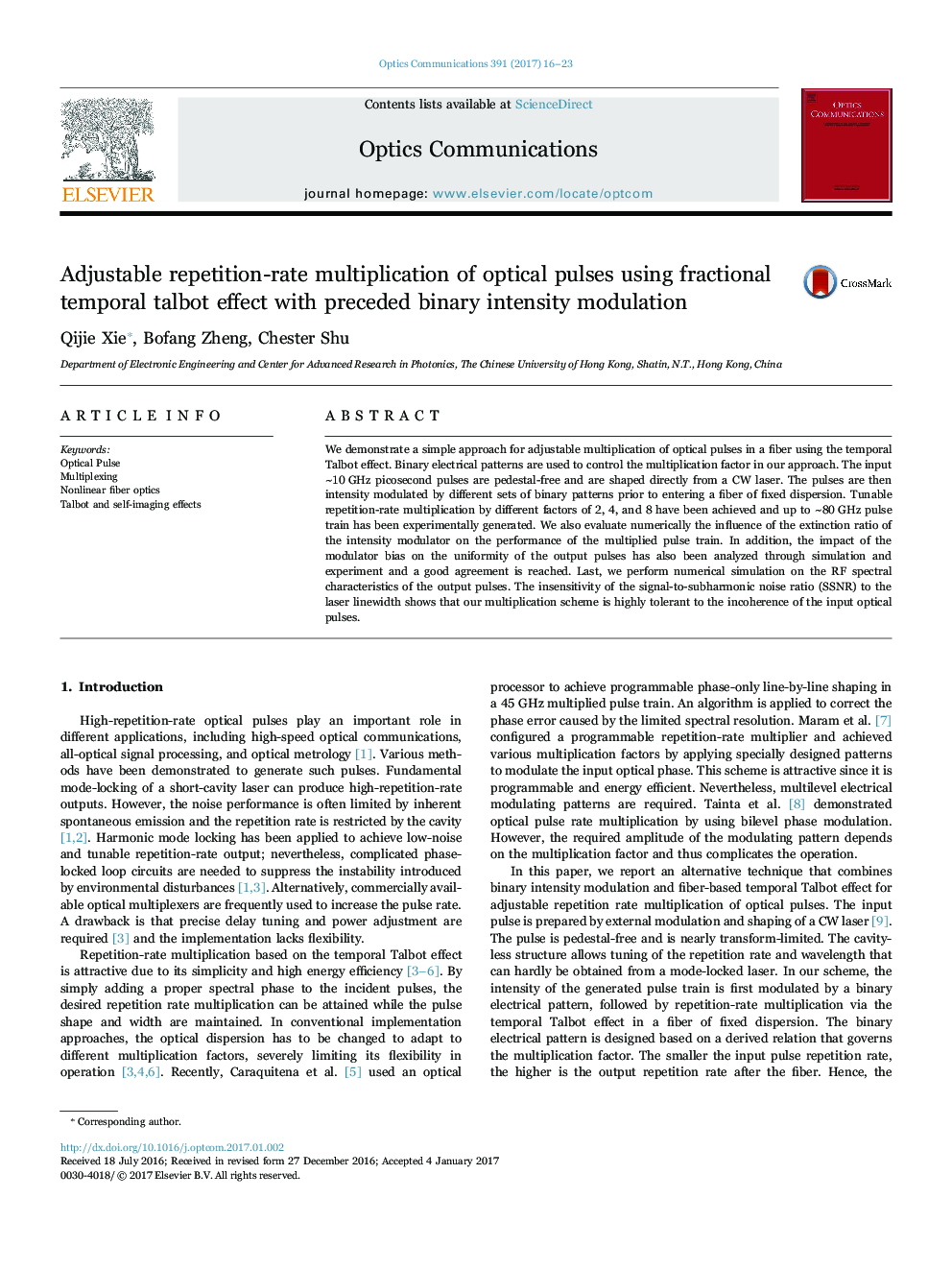| Article ID | Journal | Published Year | Pages | File Type |
|---|---|---|---|---|
| 5449504 | Optics Communications | 2017 | 8 Pages |
Abstract
We demonstrate a simple approach for adjustable multiplication of optical pulses in a fiber using the temporal Talbot effect. Binary electrical patterns are used to control the multiplication factor in our approach. The input ~10Â GHz picosecond pulses are pedestal-free and are shaped directly from a CW laser. The pulses are then intensity modulated by different sets of binary patterns prior to entering a fiber of fixed dispersion. Tunable repetition-rate multiplication by different factors of 2, 4, and 8 have been achieved and up to ~80Â GHz pulse train has been experimentally generated. We also evaluate numerically the influence of the extinction ratio of the intensity modulator on the performance of the multiplied pulse train. In addition, the impact of the modulator bias on the uniformity of the output pulses has also been analyzed through simulation and experiment and a good agreement is reached. Last, we perform numerical simulation on the RF spectral characteristics of the output pulses. The insensitivity of the signal-to-subharmonic noise ratio (SSNR) to the laser linewidth shows that our multiplication scheme is highly tolerant to the incoherence of the input optical pulses.
Related Topics
Physical Sciences and Engineering
Materials Science
Electronic, Optical and Magnetic Materials
Authors
Qijie Xie, Bofang Zheng, Chester Shu,
